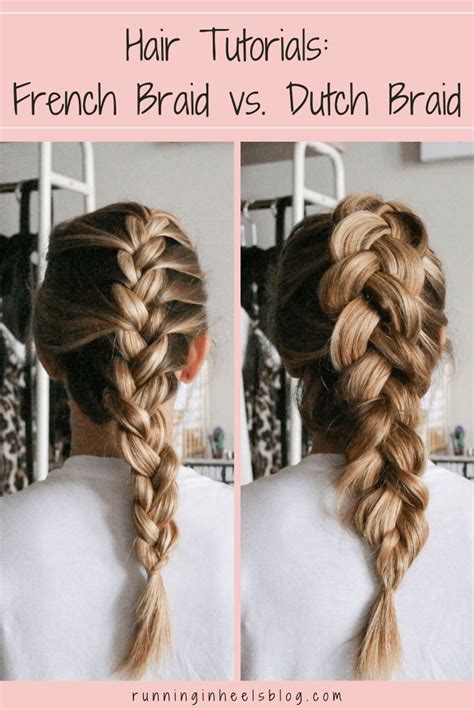Dutch braids and French braids are two of the most popular braiding techniques. Both are versatile and can be used to create a variety of looks, from everyday styles to formal updos. However, there are some key differences between the two techniques.

Dutch Braid vs. French Braid: A Side-by-Side Comparison
| Feature | Dutch Braid | French Braid |
|---|---|---|
| Origin | Netherlands | France |
| Direction of braiding | Over-under | Under-over |
| Appearance | Raised, textured | Flat, smooth |
| Difficulty | More difficult | Easier |
| Versatility | Can be worn up or down | Best worn down |
Dutch Braids: A Closer Look
Dutch braids are created by crossing the strands of hair over each other, rather than under. This creates a raised, textured look that is perfect for adding volume and interest to hair. Dutch braids are also very versatile and can be worn up or down.
Step-by-Step Instructions for Creating a Dutch Braid
- Start with damp hair. This will make the hair easier to braid and less likely to break.
- Divide your hair into three equal sections.
- Cross the right section over the middle section.
- Cross the left section over the new middle section.
- Continue crossing the sections over each other until you reach the end of the hair.
- Secure the end of the braid with a hair tie.
French Braids: A Closer Look
French braids are created by crossing the strands of hair under each other, rather than over. This creates a flat, smooth look that is perfect for everyday wear. French braids are also easier to create than Dutch braids, making them a good choice for beginners.
Step-by-Step Instructions for Creating a French Braid
- Start with damp hair. This will make the hair easier to braid and less likely to break.
- Divide your hair into three equal sections.
- Cross the right section under the middle section.
- Cross the left section under the new middle section.
- Continue crossing the sections under each other until you reach the end of the hair.
- Secure the end of the braid with a hair tie.
Which Braid is Right for You?
The best way to decide which braid is right for you is to experiment. Try both Dutch braids and French braids and see which one you prefer. If you want a raised, textured look, go with a Dutch braid. If you want a flat, smooth look, go with a French braid.
Tips and Tricks for Braiding
- Use a brush or comb to remove any tangles from your hair before you start braiding.
- Apply a small amount of hairspray to your hair to help keep the braid in place.
- If you’re having trouble keeping the braid tight, try using a smaller section of hair.
- If you want to add a little extra something to your braid, try incorporating ribbons or beads.
Creative New Applications for Braids
Braids aren’t just for hair! Here are a few creative new ways to use braids:
- Create a braided headband by braiding a few strands of hair around your head.
- Make a braided bracelet or necklace by braiding some yarn or ribbon.
- Decorate a gift bag or wrapping paper with a braided ribbon.
- Use braids to hold up curtains or tie back plants.
The possibilities are endless! So get creative and have fun with braids!
